Search results for: 'Bea'
-
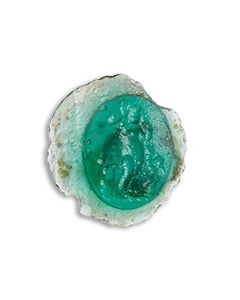 Roman intaglio in beautiful turquoise
Roman intaglio in beautiful turquoiseThe scene shows a standing Aphrodite surrounded by Erotes. Quality glass paste dating to Roman Imperial times.
Price: on request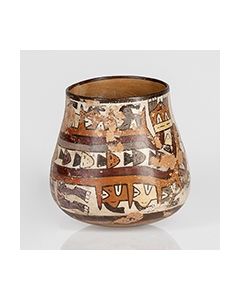 Beaker of the Nazca culture
Beaker of the Nazca cultureElegant vessel made by the precolumbian Nazca culture. The outside is decorated by a polychrome szene of geometric patterns and abstractions of animals and faces.
Price: on request Hittite beak-spouted ewer
Hittite beak-spouted ewerImposing vessel with well preserved paint. It shows geometric figures and sun wheel. From the 2nd millenium BC.
Price: on request Beaker of the Nazca culture
Beaker of the Nazca cultureVessel made by the precolumbian Nazca culture and painted in bright colours. From the early phase between the 1st and 5th century
Price: on request Beautiful Apulian kantharos
Beautiful Apulian kantharosFrom an old German collection, acquired 1976 at Kunsthandlung Aloys Faust, Cologne.
Price: on request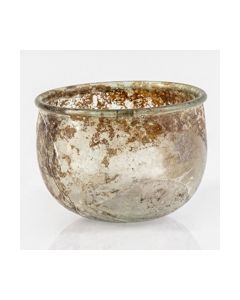 Roman glass beaker
Roman glass beakerSmall glass dating to late Roman Imperial times. From the professor Ritschel collection.
Price: on request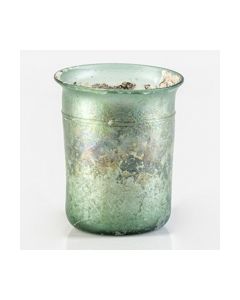 Roman glass beaker
Roman glass beakerGlass ware dating to Roman Imperial times. Great condition. A production of the Eastern provinces, possibly from Western Anatolia.
Price: on request Roman indented beaker
Roman indented beakerGlass beaker with pitting. A popular type across the whole roman empire. Mid 1st to 2nd cent. AD.
Price: on request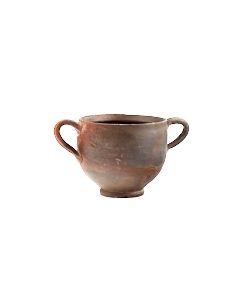 Roman beaker found in Cologne
Roman beaker found in CologneMuseum-worth preservation. Found in the Luxemburgerstrasse in Cologne, Germany. Acquired in 1967 at Hermann Zirkel Gallery in Cologne.
Price: on request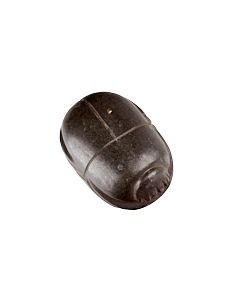 Beautiful Egyptian scarab made of dark stone
Beautiful Egyptian scarab made of dark stoneThe funerary scarab amazes by its size and the almost black stone that could be diorite. The piece is from the Late Period of Ancient Egypt.
Price: on request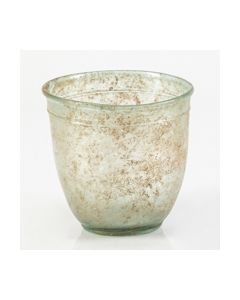 Roman glass beaker
Roman glass beakerElegant glass dating to Roman Imperial times. Nice pale green glass. From the professor Ritschel collection.
Price: on request Elegant roman glass beaker
Elegant roman glass beakerSpherical small glass from Roman Imperial times. From the professor Ritschel collection.
Price: on request Roman glass beaker
Roman glass beakerWell preserved small glass dating to late Roman Imperial times. From the professor Ritschel collection.
Price: on request Roman glass beaker
Roman glass beakerNice pale green glass dating to Roman Imperial times. From the professor Ritschel collection.
Price: on request Dagger blade made of beautiful flint
Dagger blade made of beautiful flintThe finely worked long blade was found in Luetzow in Northern Germany. The artefact was made towards the end of the Neolithic.
Price: on request Beaker of the Bell Beaker culture
Beaker of the Bell Beaker cultureThe voluminous body has the typical shape of vessels from the Bell Beaker culture. It has been made during the transitioning period between Stone Age and Bronze Age.
Price: on request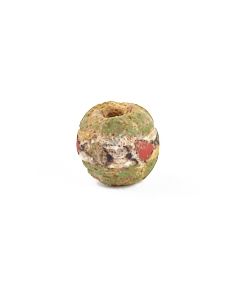 Mosaic face bead with female bust
Mosaic face bead with female bustThis small work of art was made around the beginning of the Common Era. The mosaic glass workshop it came from was probably located in Roman Ptolemaic Egypt.
Price: on request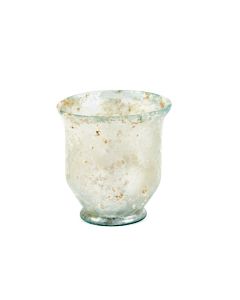 Roman glass beaker
Roman glass beakerNice cup made of pale turquoise glass. Household item from the 1st to 3rd century.
Price: on request Amphora with beautiful marina patina
Amphora with beautiful marina patinaTable amphora, or vessel for transport of particularly precious goods. The beautiful dense marine patina makes this vase a true eye-catcher. From the Austrian collection of Prof. Ritschel, carrier of the Large Cross of Honor of the Austrian Republic and many other prizes and honors.
Price: on request Very fine Claudius sestertius with beautiful patina
Very fine Claudius sestertius with beautiful patinaEx private collection, acquired 1981 from the collection of Günther Schlüter, who was the president of the German Numismatic Society in Berlin in 1975-1977.
Price: on request Extremely fine Caesar Denarius with beautiful patina
Extremely fine Caesar Denarius with beautiful patinaWith this coin type, Caesar puts himself and gens IVLIA into one line with the divine mythical heroes of ancient Greece. Perfectly centered, almost uncirculated coin.
Price: on request Egyptian mummy beads necklace
Egyptian mummy beads necklaceModern assembled and threaded necklace made from original ancient Egyptian beads. The socalled mummy beads are made of faience and date to the Late Period of ancient Egypt.
Price: on request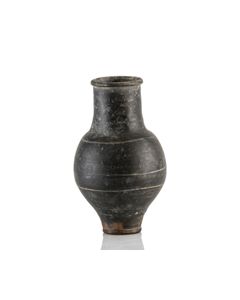 Perfectly preserved Roman beaker found 1907 in Cologne
Perfectly preserved Roman beaker found 1907 in CologneFrom the collection of the viniculture historian Friedrich von Bassermann-Jordan. Worth the exhibition in a museum.
Price: on request Roman Terra Nigra beaker found 1907 in Cologne
Roman Terra Nigra beaker found 1907 in CologneFrom the collection of the viniculture historian Friedrich von Bassermann-Jordan. Nicely preserved.
Price: on request Roman perfume bottle with beautiful patina - found in a ship wreck in the Mediterranean
Roman perfume bottle with beautiful patina - found in a ship wreck in the MediterraneanDas Glasfläschchen ist mit einer ausgeprägten und farbenfrohen Patina überzogen. Der Gefäßtyp wurde im gesamten römischen Handelsraum verwendet. Schiffswrackfund.
Price: on request Beautiful Roman glass bottle
Beautiful Roman glass bottleBeeindruckendes Fläschchen aus der römischen Zeit. Seinerzeit vermutlich für Parfüm oder kostbare Duftöle verwendet. Das Glas schimmert durch starke Irideszenz in allen Farben. Wunderschönes Exemplar!
Price: on request Rare Roman mosaic glass face bead showing Medusa head
Rare Roman mosaic glass face bead showing Medusa headMosaikglasperle aus einer oströmischen Werkstatt des 1. Jh. n. Chr., möglicherweise ägyptisch oder nubischer Import. Das abgebildete Frauengesicht wird gerne als Darstellung der Medusa gedeutet.
Price: on request Decorated socketed axe head with beautiful patina
Decorated socketed axe head with beautiful patinaBeilkopf aus der späten Bronzezeit Europas. Der Vorzug der Tüllenbeile gegenüber früheren Beiltypen besteht in der einfachen Schäftung mittels der Öffnung am Nacken. Museumswürdige dunkle Patina.
Price: on request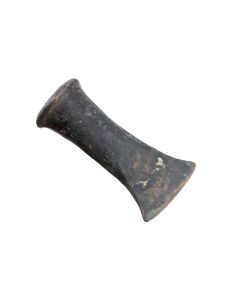 Bronze axe head with beautiful patina
Bronze axe head with beautiful patinaKörper mit ovalem Querschnitt und charakteristischer Öffnung am Nacken, für die einfache Schäftung des Beilkopfes. Dieses Exemplar besticht besonders durch seine edle Patina, einem Zeugnis der vergangenen Jahrhunderte.
Price: on request Bronze axe head with beautiful patina
Bronze axe head with beautiful patinaKörper mit ovalem Querschnitt und charakteristischer Öffnung am Nacken, für die einfache Schäftung des Beilkopfes. Derartige Beile wurden in der späten Bronzezeit als Arbeitsgeräte vielfältig eingesetzt. Spannendes Belegstück.
Price: on request Thick butted axe head made of beautiful flint
Thick butted axe head made of beautiful flintKlinge eines dünnblattigen Dicknackenbeils. Trapezförmiger Körper aus schönem Feuerstein in charakteristischem Braun. Ganggrabzeit bis Dolchzeit.
Price: on request Roman gold ring with beautiful intaglio
Roman gold ring with beautiful intaglioHervorragend erhaltener Fingerring aus Gold mit hohler Ringschiene. Schönes Intaglio aus Karneol mit dem Treuesymbol dextrarum iunctio. 10mm x 8mm Innenmaße.
Price: on request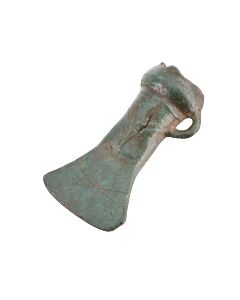 Socketed axe head with beautiful patina
Socketed axe head with beautiful patinaKörper mit ovalem Querschnitt und charakteristischer Öffnung am Nacken, für die einfache Schäftung des Beilkopfes. Dieses Exemplar besticht besonders durch seine schöne Patina, einem Zeugnis der vergangenen Jahrhunderte.
Price: on request Thin butted axe head from the Funnel Beaker culture
Thin butted axe head from the Funnel Beaker cultureDünnnackige Beilklinge aus grauem Flint mit schönen rot-braunen Einschlüssen. Dolmenzeit bis Ganggrabzeit. Beeindruckend durch die Größe.
Price: on request Thin butted axe head from the Funnel Beaker culture
Thin butted axe head from the Funnel Beaker cultureHellgrauer bis dunkelgrauer Flint. Massiver Beilkopf, der durch Größe und Gewicht beeindruckt. Dolmenzeit bis Ganggrabzeit, 3900 bis 3000 v. Chr.
Price: on request Roman jar or beaker, probably found in Trier area.
Roman jar or beaker, probably found in Trier area.Interesting piece from a German collection.
Price: on request

